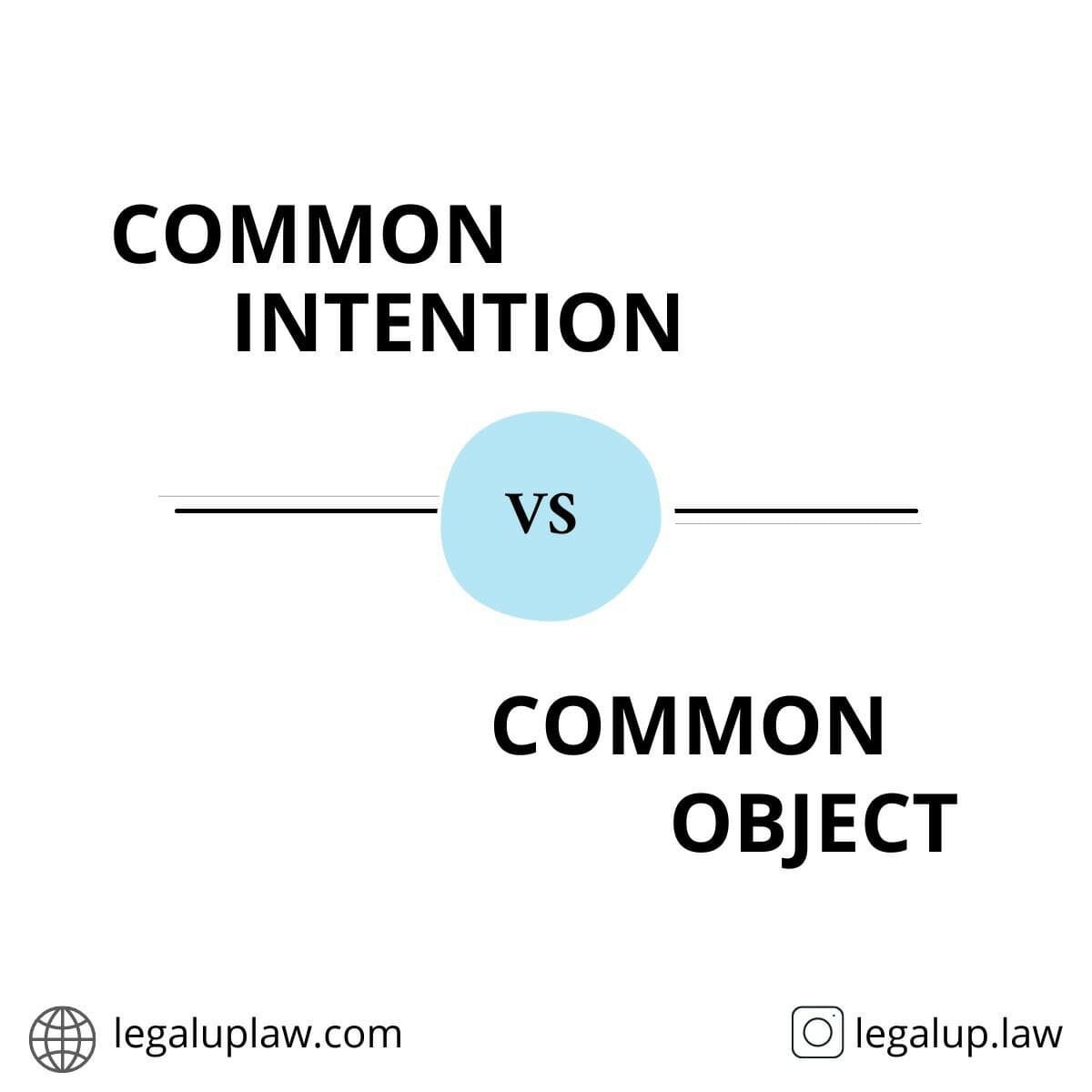Common intention is derived from Section 34 of the Indian Penal Code,1860 wherein the Concept of Joint Liability is construed from the bare reading of the provision, as it makes the person jointly liability on all the people, having a common intention as if the individual has committed the crime by itself. moreover, it is Rule of Evidence.
On the other hand, Common object can be derived from Section 149 of the Indian Penal Code, which talks about the concept of Constructive liability.
Table of Contents
Section 34 of the Indian Penal Code
Section 34. Acts done by several persons in furtherance of common intention.—When a criminal act is done by several persons in furtherance of the common intention of all, each of such persons is liable for that act in the same manner as if it were done by him alone. (here)
Ingredients of the Section which needs to be emphasised are:-
1. Several persons, which means two or more than two.
2. In furtherance of the Common intention, this indirectly suggests, the act u/s 32, is done in the consequence of the prior meeting of mind, although it may happen before or spur of the moment of the commission of a crime, of all the individuals present. as the result of such intention act or omission may result, which in return leads to joint liability (Suresh v. the State of UP).
3. Liability would arise in the same manner as if the act is done by one alone, This essential made many accused liable for the act committed by another, but as they were having a common intention, they are also liable, and as per the section they will be deemed to have committed the act alone, thereby creating the presumptions liability upon them. Practically, direct proof is not available, therefore it is the question of fact, and deduce for the Conduct.
Barendra Kumar Goshe v. King-Emperor,1924(here) is the prominent case regarding the same, it was held the even the person standing outside the door to caution the offender who is actually committing also serves the liability read with the section of the substantive offence.
This Section is always read with other substantive offences sections, thereby creating no substantive offence. But on the other hand, Section 149 of the Indian Penal Code 1860 deals with the substantive offence in itself.

Section 149 of the Indian Penal Code
149. Every member of unlawful assembly guilty of offence committed in the prosecution of common object.—If an offence is committed by any member of an unlawful assembly in prosecution of the common object of that assembly, or such as the members of that assembly knew to be likely to be committed in prosecution of that object, every person who, at the time of the committing of that offence, is a member of the same assembly, is guilty of that offence. (here)
The essential ingredients of the section are as follows:-
- Any unlawful assembly, which means an assembly consisting of five or more than five members derived from section 141 of Indian Penal Code 1860.
2. Procesultion of a common object, it is mandatory that, the act is in the pursuance of the common object which is a question of fact. mere presence in the unlawful assembly does not make the person liable unless the common object is not known to that person. For making a person liable under this Section common object is to be proved, otherwise dealt individually( State of Punjab v Sanjiv Kumar 2007)(here)
It is to be acknowledged here, in furtherance is different form during furtherance, as it strictly constructs in order to attain the common object, and therefore should have nexus between the object and act committed.
3. At the time of the committing the offence, is the member of the assembly, it is also necessary condition person should be the part of the assembly, unlike the case of common intention, wherein person on the telephonic communication also help in the pursuance of the common intention, thereby being guilty of the offence with the aid of 34.
There is no explicit need for the Overt Act in order to prove guilt with the aid of 149, only being a member of the Unlawful Assembly (Section 142) with requisite common intention is sufficient. (Bikau Pandey v State of Bihar,2003)(here)
What are the Differentiating factors between common object and common intention?
- Specific offence: Section 34 being not the specific offence has the reasoning behind the same, as wording of the section talks about the word Act, which is criminal in nature, also, should also be already commited. Additionally, all other Accused are liable for that act as they have committed the smae with the common intention. on the other hand Section 149 deals with the specific offence that, being member of the unlawfull assembely in itself creates liability if the same was in the procsecution of the common object.
- Participation: Section 34 has the leading feature, that active participation is must. it perhaps not need to be physical, but has to be there.but, mere presence of the offence doing nothing, would not create the liability on him of the offence. Whereas, 149 does not require any specific partcipation rather knowing the common object and being the member of the lawful assembly(Section 142) are sufficent clsuse to the convicted under the Section.
- Number of person: Section 34 requires two or more than two, whereas section 141 is the inherent part to 149, therefore requires five or more than five.
Alternative use of Sections:
it is also pertinent that, in a certain case, if the offender is acquitted under the conviction of Section 149 may be taken into the consideration, or be termed as accused with reference to Section 34, but the ingredients of Section 34 has to be proved by the Prosecution without reasonable doubt.
Conlusively, Section 34 = Common Intention + Shared prearranged plan + Active Participation.
and, Section 149 = In prosecution of Common Object + Any member(u/s.142) of unlawful assembly (u/s.141)
These two formulae are in themselves sufficient to categories the difference between the particular Section.
This article is written by Adish Jain, a 3rd-year law student at Symbiosis Law School, Noida.






1 Comment